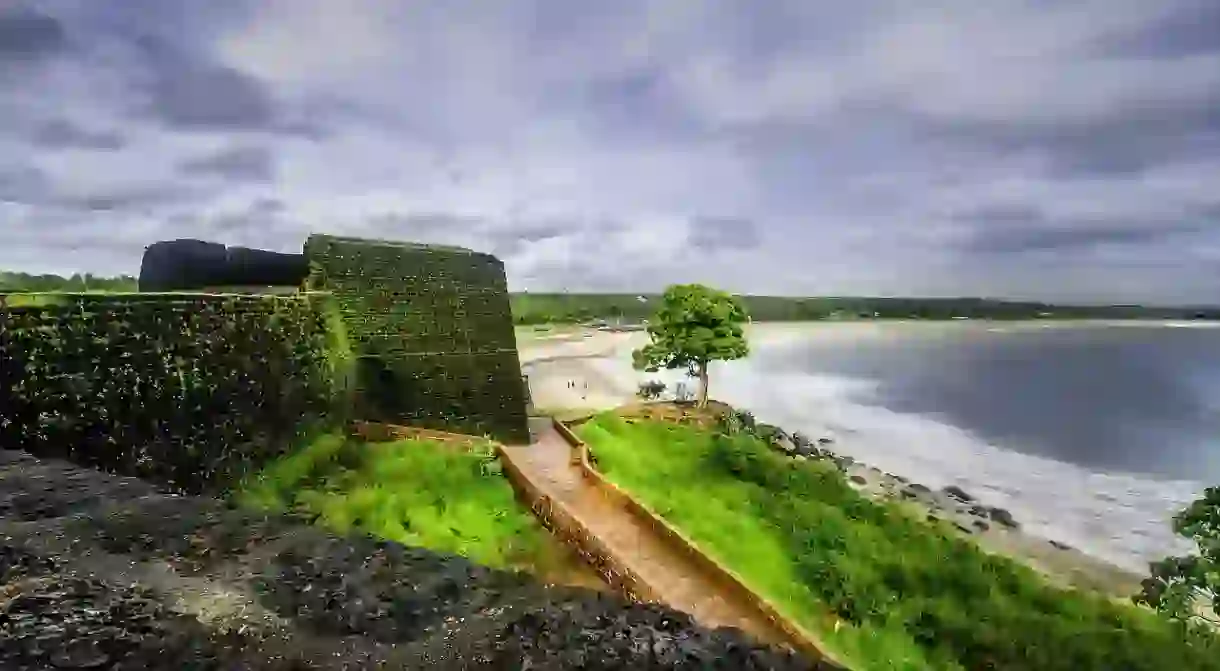11 Historic Forts You Should Visit in Kerala, India

Forts are one of the surviving symbols of history that stand testimony to the past of a land. Built by the governors of the land, they acted as the fortifications of safety and security of the rulers. Like every other land, Kerala too has several forts which tell their tales of antiquity. While most of them are in a state of disrepair, there are a few that live on as the markers of glory of the era they were built in. Dating from the 1500s, here are 11 forts that must be visited in Kerala before they are lost forever.
St Angelo Fort, Kannur
Built in 1505 by Dom Francisco de Almeida, the first Portuguese Viceroy of India, St. Angelo Fort, AKA Kannur Fort, offers fantastic views of the Arabian Sea and Mappila Bay harbor. It is fairly well preserved as a protected monument under the Archaeological Survey of India.
Palakkad Fort, Palakkad
Palakkad Fort, AKA Tipu’s Fort was built in its present form in 1766 CE by Hyder Ali Khan, de facto ruler of the Kingdom of Mysore, and Tipu Sultan’s father. It is among the best-preserved forts in South India and is located in the heart of Palakkad town.
Pallippuram Fort, Ernakulam
The oldest existing European fort in India today, Pallippuram Fort, was built by the Portuguese in 1503. This hexagonal fort is situated in the northern extremity of Vypin island and is locally known as Ayikotta or Alikotta.
Chandragiri Fort, Kasaragode
Chandragiri Fort in Kasaragode lies at the confluence of Payaswini River and the Arabian Sea. This 17th-century fort was built by Sivappa Naik of Bednapore after the fall of the Vijayanagara Empire and stands atop a hill at 46 meters (150 feet) above sea level.
Bekal Fort, Kasaragode
Built in 1650 CE by Shivappa Nayaka of Keladi and sprawling over 40 acres, Bekal Fort is the largest fort in Kerala. The music of the waves from the adjoining beach is an idyllic backdrop while walking along the manicured lawn. The glimmering golden sunset you can witness here will soothe you into contemplation.
Hosdurg Fort, Kasaragode
Ruins, Historical Landmark, Archaeological site

Hosdurg fort in Kasaragode, with its round bastion, is an imposing structure built by Somashekara Nayaka from the Keladi Nayaka dynasty of Ikkeri. The fort is now in ruins. The place near the fort is famously known for the Nithyanand Asram with its 45 caves.
Thalassery Fort, Kannur
Thalassery, AKA Tellicherry was one of the most prominent European trading centers in Kerala and to establish a stronghold on the Malabar Coast, the British East India Company was compelled to strengthen the fortification of their property. The square Thalassery Fort, with its high walls, strong flanking bastions, secret tunnels to the sea, and intricately carved doors is an imposing structure.
St. Thomas Fort, Kollam
Ruins

St. Thomas Fort, AKA Thangasseri Fort, is a ruined fort located in the beach town of Thankasseri in Kollam. Thangasseri is known for its trade relations with the Chinese traders, from as early as the first millennium CE. Due to its importance as a trade port, it was later colonized by the Portuguese, the Dutch, and the British during the European reign in Kerala.
Fort Emmanuel, Ernakulam
Ruins, Archaeological site, Historical Landmark

Fort Emmanuel, AKA Immanuel Fort, is a ruined fort located in Fort Kochi. The fort was built by the Portuguese subsequent to the permission granted by the Rajah of Kochi in 1503 CE. The first part of Fort Kochi comes from this fort. Later in 1663, the fort was captured by the Dutch, who in turn held it until 1795, after which the British took control by defeating them.
Kottappuram Fort, Thrissur
Ruins

Cranganore Fort, AKA Kodungallur Fort or Kottappuram Fort, is situated in Kodungallur in Thrissur district. The stone fort was built by the Protuguese in 1523, and was called Fortaleza da Sao Tome. The Dutch took possession of the fort in 1661, which later came under the control of Tipu Sultan, who destroyed it shortly after.
Anchuthengu Fort, Thiruvananthapuram
Anchuthengu Fort, AKA Anjengo Fort, was established by the British East India company in 1696 subsequent to the permission received from the Queen of Attingal in 1694. The fort is located in Anchuthengu, Thiruvananthapuram and was the first permanent post of the British on the Malabar Coast.













